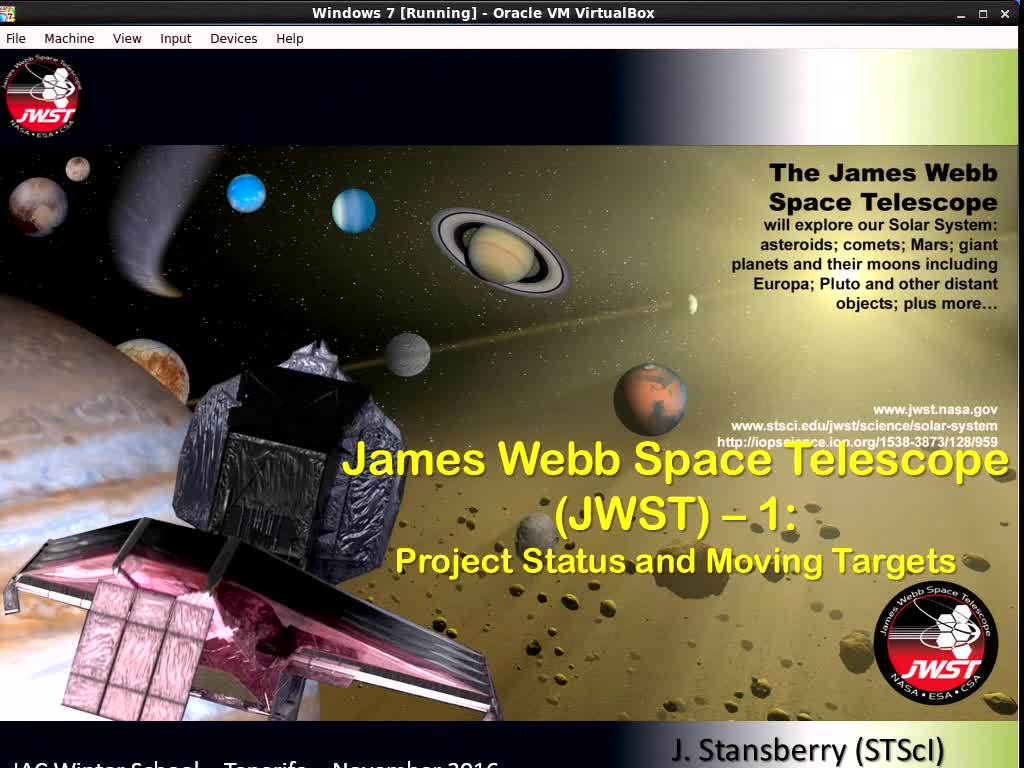Found 5 talks width keyword JWST

Abstract
Nebular emission lines are a powerful diagnostic tool for tracing the chemical evolution in star-forming galaxies (SFGs) across cosmic time. Due to their proximity, SGFs are ideal for studying the physical properties, stellar population, and nebular gas in much more detail. The COS Legacy Spectroscopy SurveY (CLASSY) is a treasury survey that comprises UV+optical spectra of 45 local SFGs covering a broad range of physical properties. In this talk, I present the results of the physical conditions and metallicities for the CLASSY sample focused on the impact of the aperture effects of the inferred metallicities and the abundance patterns of several elements. We found that the results for the inferred electron density, temperature, and metallicity derived using different aperture sizes, 1″-3″, are consistent, indicating a uniform mapping of the nebular gas. We also showed that the physical properties derived from the optical are appropriate for observations in the far-UV, allowing a better interpretation of the interplay between the stellar and gas components. I will also discuss the results of the Ne/O, Cl/O, S/O, and Ar/O vs. O/H relations and their behaviour with different galaxy properties (e.g., stellar mass and star formation rate). We found that such abundance ratios follow a constant trend with O/H as expected, except for Ne/O and Ar/O, which show a significant trend at high metallicities. We discuss the scatter involved in the N/O versus O/H relation and its connection with the different UV+optical observables. Finally, we compare these results with the chemical abundances derived at z > 6 galaxies observed with the JWST.

Abstract
Finally, I will summarise our ongoing JWST work within the GATOS (Galactic Activity, Torus and Outflow Survey) collaboration. In particular, I will focus on our recent study about the survival of PAH molecules in AGN-driven outflows.

Abstract
The formation of the first galaxies in the Universe is the new frontier of both galaxy formation and reionization studies. In fact, we will soon directly observe primeval galaxies thanks to the James Webb Space Telescope, and witness the reionization process through 21cm intensity mapping experiments. This unique moment in human history creates a fierce new challenge, i.e. to simultaneously understand in a unique and coherent picture the processes of galaxy formation and reionization, and – crucially – their connection. The latter, in particular, has escaped past numerical efforts. In this talk I will present the first results on this front from an years-long effort geared toward achieving such comprehensive picture, culminated in the Thesan suite of cosmological radiation-magneto-hydrodynamical simulations. I will briefly introduce the features of Thesan, highlighting the successes and failures of its physical model. Thesan produces realistic galaxy populations thanks to state-of-the-art physics, including self-consistent dust production+destruction and radiation transport. I will then show how Thesan can, for the first time, reproduce the connection between IGM and galaxies, as measured from the modulation of the Lyman-alpha flux around galaxies. Finally, I will chart the way forward towards and even deeper understanding of the emergence of the first structures in the Universe.

Abstract

Abstract
Series: XXVIII Canary Islands Winter School of Astrophysics: Solar System Exploration Topic: Exploring the Outer Solar System
Lecture 2: James Webb Space Telescope (JWST) - Characterizing the outer Solar System
In this second lecture, Dr. Stansberry focus in the James Webb Space Telescope (JWST). The speaker gives a detailed description of the characteristis and capabilities of the telescope, as well as the science case for the observations of Solar System objects using the JWST.
« Newer Older »
Upcoming talks
- Classical Be stars - Constraining binary interaction physics in massive starsDr. Julia BodensteinerThursday April 25, 2024 - 10:30 GMT+1 (Aula)
- Runaway O and Be stars found using Gaia DR3, new stellar bow shocks and search for binariesMar Carretero CastrilloTuesday April 30, 2024 - 12:30 GMT+1 (Aula)









